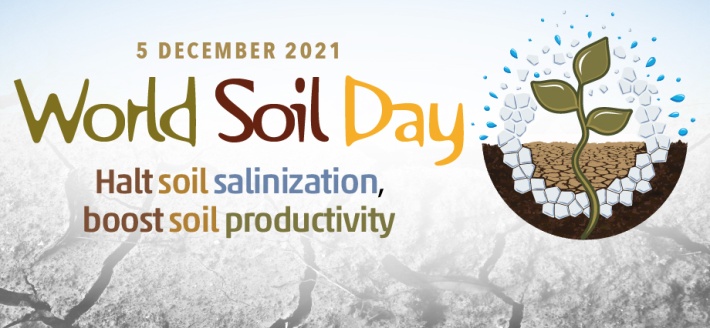WORLD SOIL DAY

Disclaimer: Copyright infringement not intended
Context
- Recently, ICAR (Indian Council of Agricultural Research) – Central Coastal Agricultural Research Institute (CCARI) celebrated ‘World Soil Day’ (WSD) on 5th December 2021.
About
- The World Soil Day is observed on 5th December every year across the globe.
- 5th December 2014 was designated as the first official WSD by the UN General Assembly (UNGA)
- Aim: To apprise the farmers and citizens about the soil’s importance in maintaining the healthy ecosystems and human well-being by addressing the growing challenges in soil management, fighting soil biodiversity, etc.
- The Day also aims to encourage the governments, organizations, communities and individuals around the world to commit for proactively improving soil health.
FAO gives two awards in line with this day:
- The King Bhumibol World Soil Day Award: An annual award that honours individuals, communities, organizations and countries that organized remarkable and engaging World Soil Day activities or campaigns in the previous year.
- The Glinka World Soil Prize: An annual award for dynamic change-makers dedicated to solving one of our world’s most pressing environmental issues: soil degradation. It honors individuals and organizations whose leadership and activities have contributed, or are still contributing to the promotion of sustainable soil management and the protection of soil resources.
This year’s theme
- World Soil Day - 2021 Theme - “Halt Soil Salinization, Boost Soil Productivity”.
Soil Health in India
- As per the 2019-20 Soil Health Survey conducted by the Indian government, 55 percent of the country's soil is deficient in nitrogen, 42 percent in phosphorus and 44 percent in organic carbon.
- Indian soil consists of primary nutrients such as nitrogen, phosphorous and potassium, secondary nutrients such as sulphur, calcium and magnesium, and micro-nutrients such as zinc, iron, and manganese.
- While the levels of food production have increased over the past few decades, it has also led to issues such as an imbalance of nutrients in the soil, decline in the water table as well as the quality of water, and overall depletion of soil health.
- About 5.3 billion tonnes of soil gets eroded annually, at a rate of about 16.4 tonne/hectare.
- Imbalance in the use of fertilizers in soil results in a loss of fertility.
- Fertilizers and sundry agricultural chemicals seep easily into the ground, toxifying the soil and groundwater.
- Urea is used more than other fertilizers. While the recommended ratio of use of the NPK fertilizers is 4:2:1, this ratio in India is currently at 6.7:2.4:1.6
- An imbalanced use of urea leads to a loss of fertility in the soil over a period of time, affecting productivity.
- A 2019 report by the Centre for Science and Environment on the fertiliser industry in India – the world’s largest producer and consumer of fertilizers after China – warns that nitrogen pollution in surface and groundwater has reached “alarming levels”.
Initiatives to Improve Soil Health in India:
- Zero Budget Natural Farming, a more sustainable form of agriculture using traditional and organic farming methods such as intercropping and zero chemicals.
- Soil Health Card Scheme
- Organic Farming
- Paramparagat Krishi Vikas Yojana
- Fertilizer Self-Sufficiency
- Digital Agriculture
- Carbon Farming
- The Nutrient Based Subsidy (NBS) Scheme
Final Thoughts
- Transitioning to a fully natural agricultural system and arresting the degradation of the soil, however, will require an overhaul of the entire food ecosystem – from governments compensating farmers for low yields in the initial years to consumers shelling out more for food of better quality.
- And it must be done urgently, for the clock is ticking on India’s soil health.
Read: https://www.iasgyan.in/blogs/properties-of-soils-in-india



1.png)
